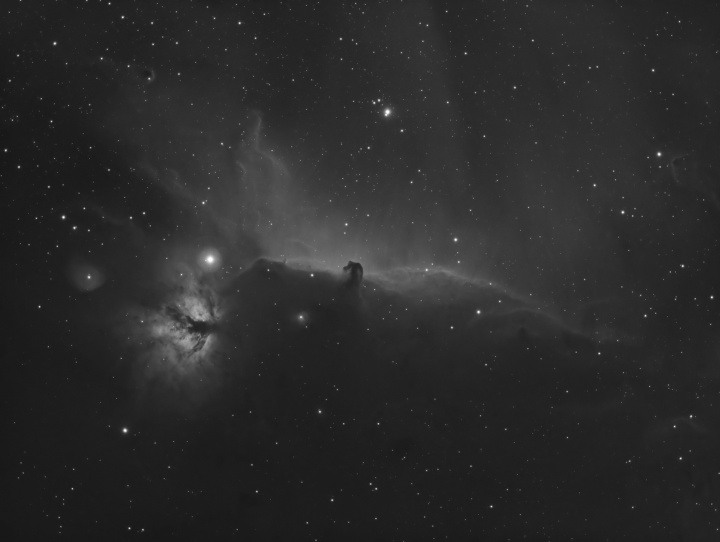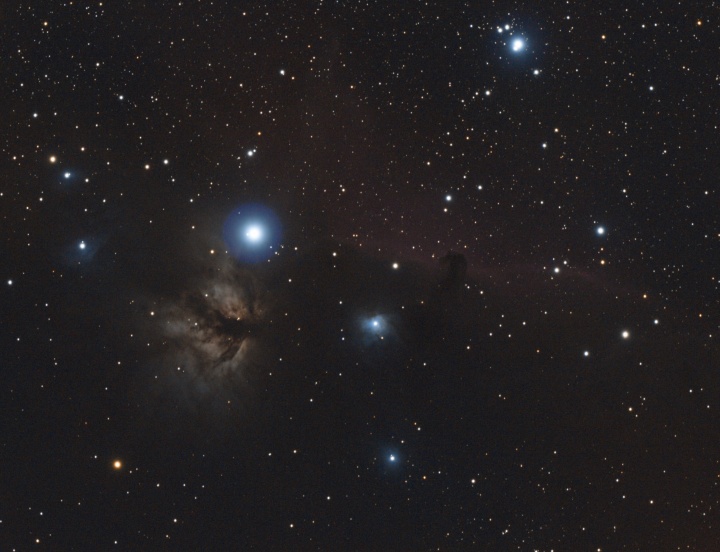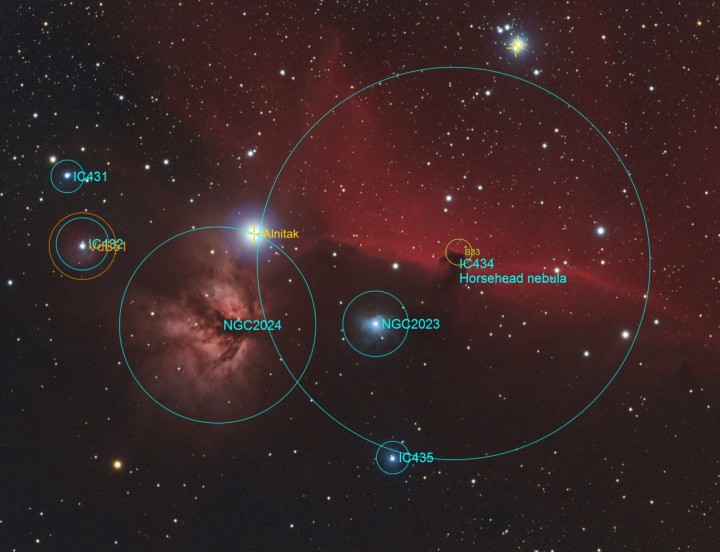This is another famous scene in the constellation Orion. The top half of this image is filled with a diffuse glow of hydrogen gas (emission nebula IC 434), which is excited by the bright star Sigma Orionis (top). My image also shows a large bright structure on the left side of the frame: the Flame nebula (NGC 2024). This gas reflects light from a very bright star right above the nebula, Alnitak.
There are two very interesting dark structures in this area. The Horse head nebula (also known as Barnard 33) is a silhouette formed by dark dust, which blocks the light from the emission nebula behind it. Similarly, intricate dark dust clouds obscure light from the Flame nebula.

A year ago, I went out to my dark(er) site with red zone light pollution (19.4 mag/arc sec²) and captured the same region with my DSLR camera behind the telescope.
https://astrovirusblog.wordpress.com/2017/01/19/flame-and-horsehead-nebulas/
This is what 65 minutes of exposure looked like in January 2017:

I then used the new H-alpha data to enhance the old DSLR image, and the Horse head suddenly popped out against the bright red hydrogen glow:


Acquisition details:
Date: 12 February 2018
Telescope: Teleskop-Service 80/480 triplet with 2″ TS 0.79X reducer/flattener
Cameras: Canon 450D, ZWO ASI1600MM-C with EFW-8 and ZWO 31 mm filters
Mount: Skywatcher EQ5 Pro
Exposure: 2.6 hours
RGB: 65 x 60 sec (ISO-800)
Ha 7 nm: 46 x 120 sec (gain: 200, bin 1×1, -15C)
Software: APT, PHD2, EQMOD, PixInsight

